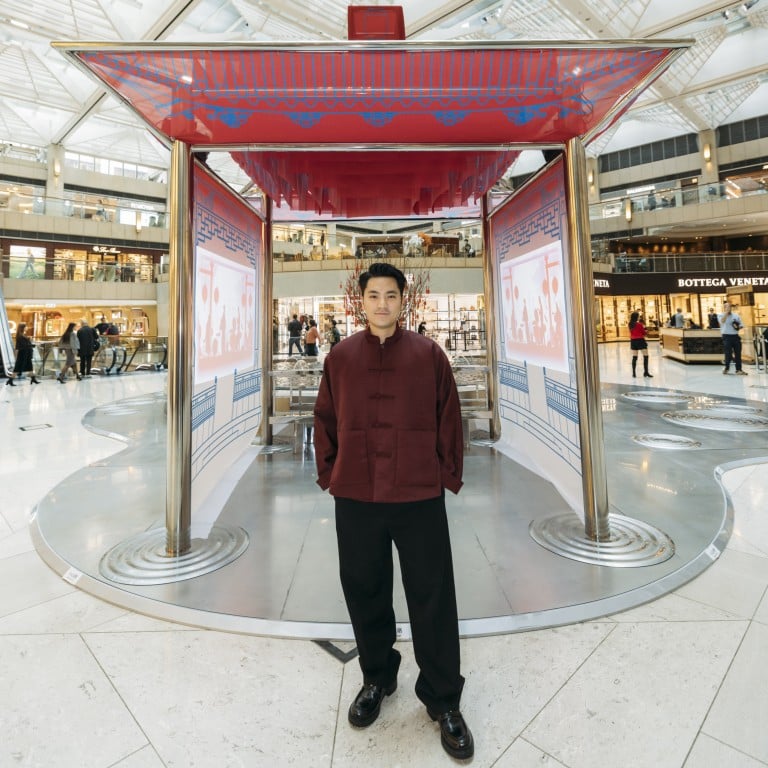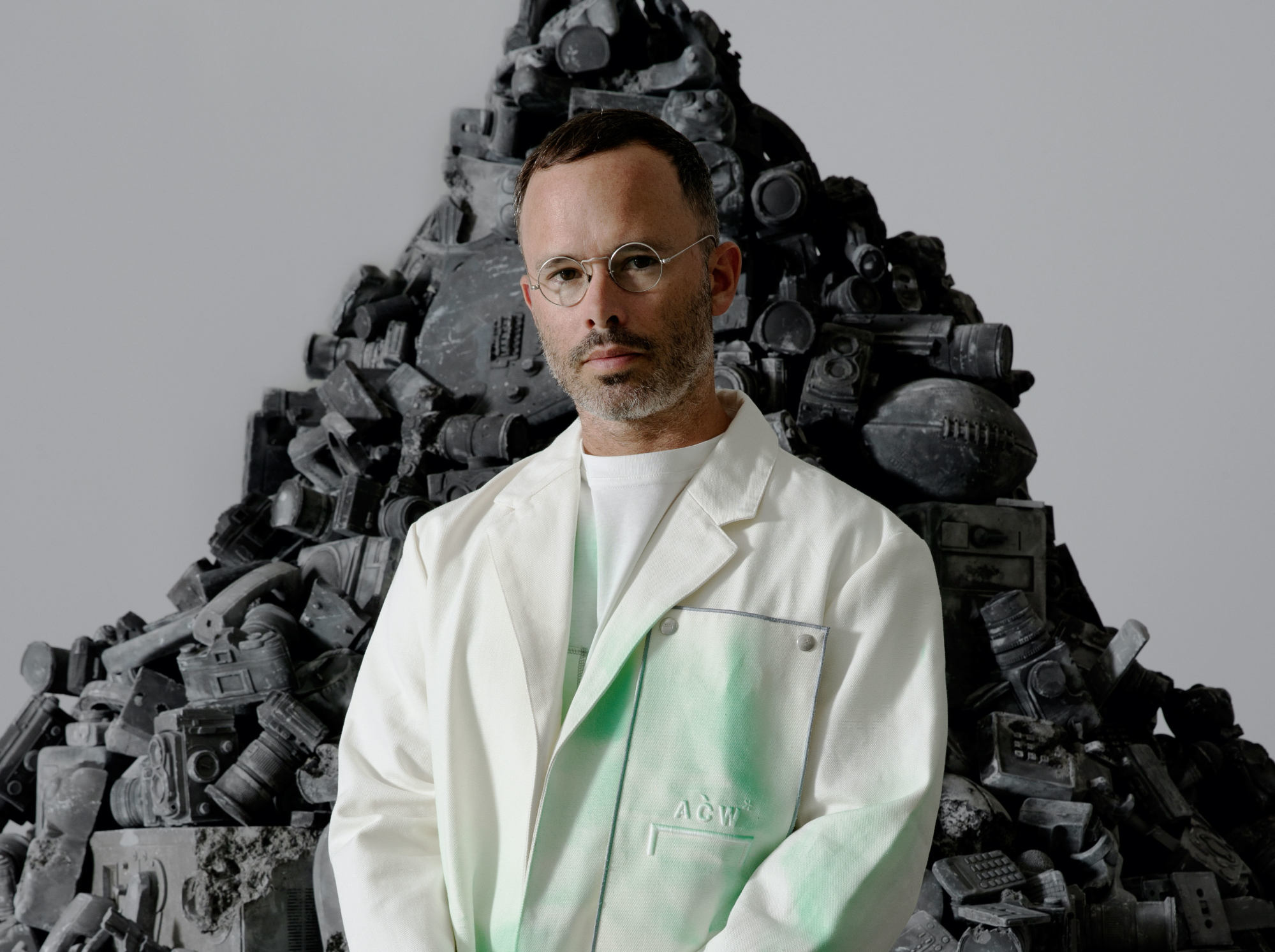The Hong Kong artist tapped by Fendi, inspired by Virgil Abloh: Oscar Wang’s new Timeless Pavilion installations show the culture-crossing creative’s instincts for sharing and caring

What does being a creative mean in 2024? For Hong Kong-born, London-raised, Shanghai-based multi-hyphenate Oscar Wang, it’s about collaboration. Togetherness. Family.
The story behind Chanel’s short film starring Brad Pitt and Penélope Cruz
“I’m just a creative for humanity,” Wang laughs. “I care a lot about family. I care a lot about people. I think the Chinese people are very strong in terms of family bonding. We have this mindset of taking care of each other – this is just one of those rare traits I think humans are slowly forgetting about.”

As Wang well knows, it takes a lot more than talent or expertise in just one area to stay relevant these days. The 33-year-old multimedia artist and founder of Open Work Studio has collaborated with the likes of Fendi on a new version of their famed Peekaboo bag, and renowned American artist Daniel Arsham on a teapot set. Like legendary music producer Pharrell Williams, who now oversees menswear at Louis Vuitton, or pop star Rihanna, who is now better known as the head of her Fenty fashion and beauty lines, Wang has put his name on the map across multiple industries, from design to fashion. But for him, becoming a master of all trades has more to do with looking back than getting ahead.
“Sometimes I want to use my art form and my creations to give a gentle reminder over time that that’s what makes us different,” says Wang. “We come from thousands of years of existence. From food to culture to literature, there’s just so much cool stuff we need to dig into and restudy and re-present to the market.”

Despite a low-key profile, Wang’s creative endeavours speak volumes. With roots in Asia and over 10 years of experience in the UK honing his craft, Wang launched his career with a master’s degree in spatial design from the Chelsea College of Art and Design. Well-connected in both East and West, he has made a name for himself in the luxury sphere in bringing cultural intuition to commercial projects. “Living in Shanghai, I have a very clear understanding of each culture,” he says.
Is this Hong Kong’s ultimate multi-hyphenate? Meet Lindsay Jang
As we sit inside one of Wang’s latest projects – Timeless Pavilion – presented in Hong Kong, I am immersed in what he is talking about. Unveiled just ahead of the Lunar New Year holiday, the project takes an architectural mainstay of daily life in the city and reimagines it as a trendy, modern space inside Central’s prominent Landmark building.
“Pavilions exist all throughout Hong Kong,” Wang says of the historic-looking structures – many only recent additions to our trails and parks – which serve as a gathering point for Hongkongers of all ages, from all walks of life. “At the end of the day, I just want people to gather. The offline experience is very crucial for me, my design and my practice. I need people to gather, because that’s what makes us human.”

If bringing people together is the method compelling Wang’s creativity, then exploring our common humanity is the ultimate goal. Indeed, for Wang, humanity and creativity go hand in hand. Experiencing daily life through his eyes reveals his creative process at work. “In the mornings, I go to the mountains, hang out at the pavilions, watch the elders do a bit of tai chi,” he says. “It just gives me that balance. If you can’t even do that in the first place, it’s hard to find that serenity within you.”
Who is Mary-Kate and Ashley Olsen’s lesser-known brother, James ‘Trent’ Olsen?
Staying grounded, present and connected is how Wang overcomes creative challenges. “A lot of creatives worry about losing inspiration,” he says. “I think you just need to craft your technique for searching for it, communicating your thoughts with other creatives. Don’t be shy to share your ideas. It’s like open source.”
Finding fellow practitioners of collaborative creativity – exploring the unlocked potential when ambitious minds come together – fuels Wang. “The open-minded concept in creators is something I identify quite quickly,” he says. “Virgil [Abloh] was definitely one of those. Someone that I saw that broke free, infused his culture into another culture. I find that very inspirational because you’re able to show what you represent to the world by being genuine. We live in a very ungenuine world and it’s hard sometimes to get people to even take a second glance.”

Where to start with Afrobeats: 6 epic music artists you should know
“If we all have the same narrative, maybe the collectiveness can actually impact on the conversation,” Wang says of finding synergy with other creatives. “If creatives are quite closed-minded, if you don’t communicate, it’s hard to come up with a narrative. If there’s no narrative, there’s no creativity. Sometimes it takes a bit more pushing from my side to unlock the talent. But it’s sometimes by fate too. You don’t know when that thing’s going to happen.”
That synergy is what Wang leans on when asked about balancing cultural differences between East and West. “The East is extremely quick,” he says. “The West is calm and sometimes very slow to us. I think that’s where the balance needs to come. We need to have this mutual understanding of each other’s culture first. Then, when it comes to the actual execution, there should be a little push and pull. If you’re always viewing things from your perspective, then it’s hard to make things move in the right direction.”

So has growing up jet-setting between countries while growing up disrupted his centre of gravity or has it only sharpened his creative senses. “An Oscar Wang creation will come from the fundamentals of the five senses,” Wang continues. “It’s almost like an awakening or something that I am still in search of. It should be fun, interactive. But it should be a soul-searching experience.”
Juicy tale: inside Taschen’s coffee table book on lemons in food, beauty and art
“The truth is [creative] freedom comes from producing enough work, and work that gets enough attention. And right now there’s just so many things that you have to balance to have that voice,” Wang continues, thinking about the ways digital culture has impacted creative practices. “It requires a particularly creative individual to really take the blinders off, have this open mindset and absorb what the world has to offer.”
Social media has changed the landscape forever, requiring creatives like Wang to transcend not only cultural boundaries, but generational ones, too. “I’m still working on it,” Wang admits. “But sometimes the root of where we come from is the question that we’re asking. You surround yourself with the right people. I think that’s when you really have a breakthrough, and can influence a generation ahead.”

- The founder of Open Work Studio has collaborated with Fendi on a new version of their Peekaboo bag, and American artist Daniel Arsham on a teapot set
- Formerly a masters student at the Chelsea College of Art and Design, he cites the cross-cultural creativity of the late Louis Vuitton creative director of menswear Virgil Abloh